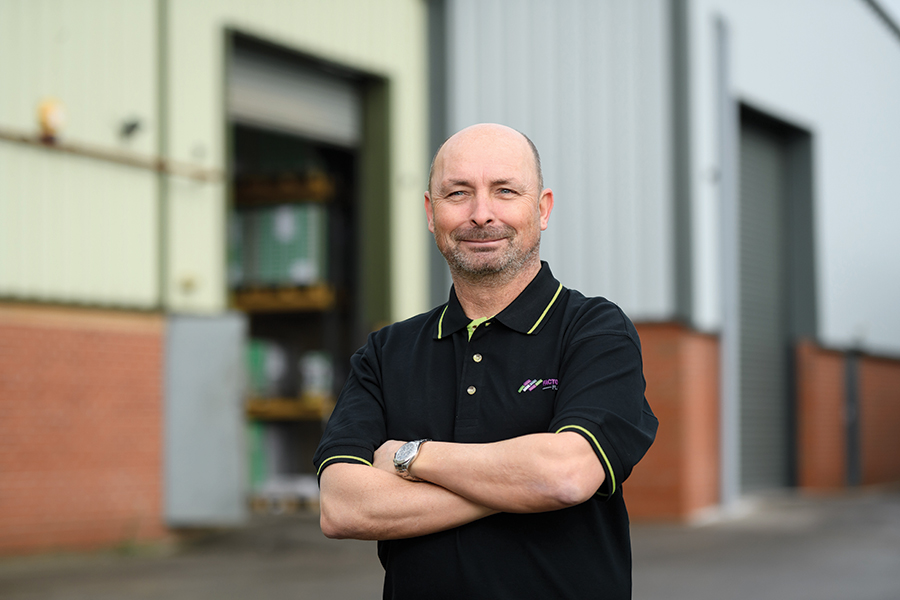Demand for waterproof laminate may never be met, says Factory Direct Flooring founder PAUL Hambidge, managing director of Factory Direct Flooring, says although consumer demand for ‘waterproof laminate’ is steadily increasing, and the European Producers of Laminate Flooring declared it a ‘trend’ for 2025, the industry is unlikely to ever deliver a solution that meets consumer expectations.
Paul explains the construction of laminate flooring is key to understanding its limitations. Laminate is made up of multiple layers: a durable wearlayer on top, a printed design layer, and a core layer of high-density fibreboard (HDF).
While the top-layer may resist water, the core is highly susceptible to moisture—but just how susceptible it is can vary, because the HDF used by one manufacturer can have different densities (and therefore, different levels of water resistance) to that of another.
‘Manufacturers have developed production processes to improve laminate’s resistance to water, like wrapping or bevelling the edges—sometimes both,’ says Paul.
‘Before bevelling, laminate planks had a square edge. Bevelling was introduced in the production process for aesthetic reasons, in that it creates a more distinctive ‘plank’, and mimics the look of real wood floors more effectively. But beyond that, manufacturers discovered bevelling helps reduce the appearance of swelling from water exposure, which would otherwise be more noticeable on square-edged laminate.
‘However, to keep production costs down, some manufacturers simply paint the bevelled edge on, rather than wrap them. This might look the part, but it doesn’t offer any disguise for swelling. Laminate flooring planks with both bevelled and wrapped edges perform much better (and this is where a lot of our preferred manufacturers are now focusing their water resistance efforts), because they temporarily prevent water from penetrating the inner fibreboard. But ultimately, for the consumer, they’re not a perfect solution either because, in time, water will find its way through the joints—though manufacturers are also making improvements here.’
One of the biggest issues here, Paul argues, is the disconnect between how the industry defines ‘waterproof’ and what consumers expect.
In the flooring industry, one common way to test laminate’s water resistance is by clicking the floorboards together, pouring water over the joints, and measuring how much (if any) water penetrates within just 24 hours.
If no water gets through in that timeframe, the product may be marketed as waterproof. But there’s no telling exactly how much water one manufacturer uses compared to another, rendering the test unreliable. This is unlike other retail industries, such as clothing, where there are standardised waterproof classifications that must be met before a product can be marketed as such.
‘That’s all well and good for spills or accidents that are cleaned up quickly,’ says Paul. ‘But what happens in a real-life scenario, like a burst pipe in the back of a cupboard that goes unnoticed for a few days? In my laminate tests, water always finds its way through. Consumers deserve to know that the industry standard test isn’t a guarantee of flood-proof flooring.’
Another complicating factor is the absence of any standardised regulation for waterproofing claims in the flooring industry.
‘Each manufacturer conducts its own tests,’ explains Paul. ‘There’s no universal standard, so the level of water resistance can vary widely from one brand to another, meaning that consumers often don’t know what they’re getting until it’s too late.’
For Paul, the lack of regulation and universal standards are a major issue. While one manufacturer may leave water on flooring joints for 24 hours, another may use less water in their tests, rendering the measure of water resistance unreliable for the consumer. He therefore believes the industry should adopt more rigorous and standardised testing methods that mimic real-life conditions more closely.
Similar to his own tests, Paul suggests a universal test could be fully submerging the boards for several days and measuring their swell factors (a unit that determines how much the board will swell from water exposure, compared to its current size).
He also recommends testing how long it takes for water to penetrate the core board, not only through the top but also the bottom layers, to more effectively mimic real-life scenarios. Until then, he advises consumers to approach waterproof claims of laminate flooring products with caution.
Despite the challenges, Paul is quick to point out that laminate flooring remains an excellent choice for many homes. ‘Laminate has so many benefits,’ he says. ‘It’s affordable, easy to install, and comes in a huge variety of styles. But the fact remains, it won’t perform like LVT or SPC when it comes to water resistance.’
He adds: ‘In nearly 35 years of working in the flooring industry, I’ve seen some incredible strides in water resistance. Some German manufacturers—including Unilin, Kronotex, and Classen—are actively improving the composition of the coreboard they use, developing a stronger water resistance, reduced swell factor, and ultimately improving laminate flooring’s value for money for the consumer.
‘But, on the whole, we’re yet to bridge the gap between manufacturers’ claims and consumer expectations when it comes to delivering a truly waterproof product.’
For consumers seeking the best possible water resistance, Paul recommends looking for something that isn’t laminate at all: ‘The best water-resistant flooring types on the market are SPC (stone plastic composite) and LVT (luxury vinyl tile). SPC’s core is compact and sturdy, and normally made of limestone or plasticisers, making it a stronger, more durable, and impact-resistant product.
‘Although SPC and LVT are water-resistant, SPC offers the highest protection against water damage when paired with waterproof sealant around the room’s edges. This makes it a popular choice in wet-rooms, bathrooms, and flood-prone homes.’
www.factory-direct-flooring.co.uk
Please click to view more articles about
Latest News
